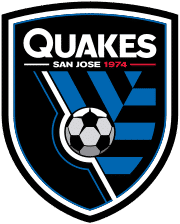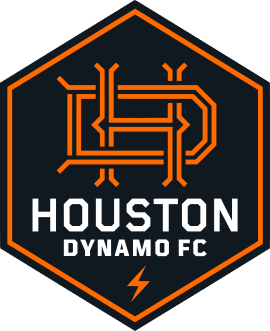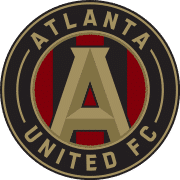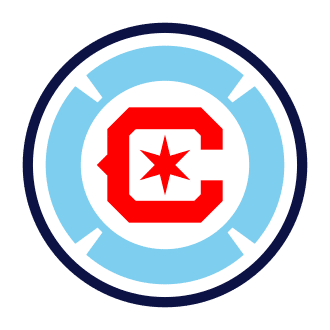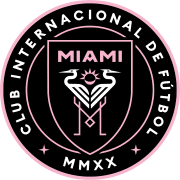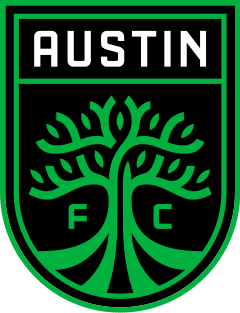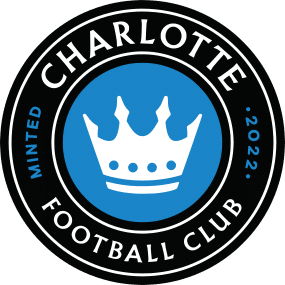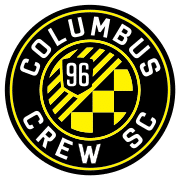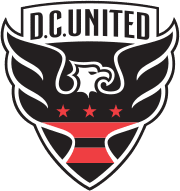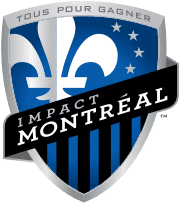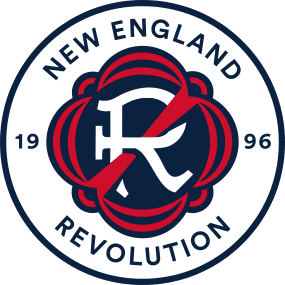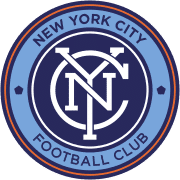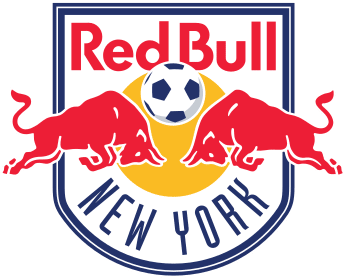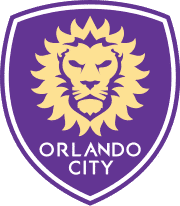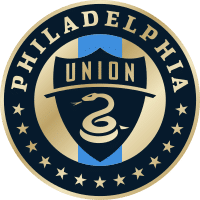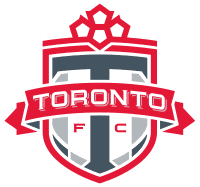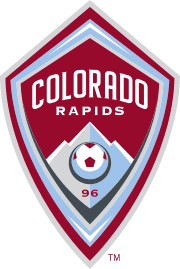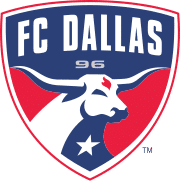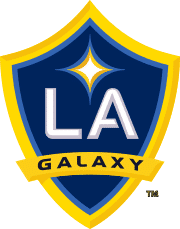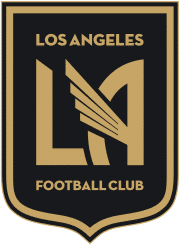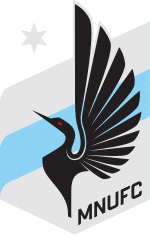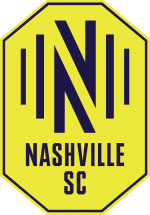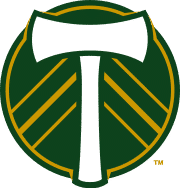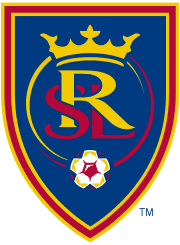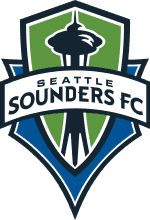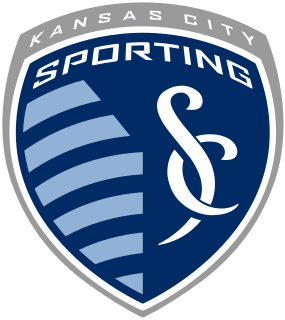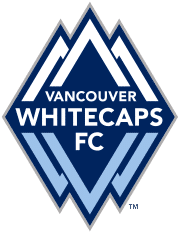San Jose Earthquakes Tryouts & Club Guide: History, Stadium, Players, and More!

Welcome!
Discover the world of soccer with fcscout.com, your go-to scout for club tryout information, club guides, player profiles, in-depth product reviews, and more. We’re dedicated to exploring and revealing the best in each domain, empowering you with knowledge to make informed choices.
Thank you for being here!
Hi, I’m Carlos! A coach, sports enthusiast, and the founder of FCScout.com.
I fell in love with the game at a very young age like many of you. I’ve been following and playing soccer for many years.
Throughout my career, I always enjoyed helping soccer players chase their dreams, which is why I started this website. I wanted to reach a larger audience outside of my local area and fcscout.com was born.
This website is a platform I will be using to update club pages on any tryouts, stadiums, players, tech, and more from clubs around the world. I also create free recruitment profiles for players looking to have that extra competitive edge when reaching out to clubs.
That’s it. That’s my pitch for you to stick around (or browse the site as you please).
This is already too much text for a “see more” drop-down button thing. If you want to reach out to me, head on over to my contact page 🙂
The San Jose Earthquakes are an American professional soccer team based in San Jose, California. The Earthquakes compete as a member club of the Western Conference of Major League Soccer (MLS).
San Jose Earthquakes Youth Development System
San Jose Earthquakes Academy Tryouts

For information on tryouts, please submit the tryout request form. Any additional information please contact the Director of Academy Operations Alex Saunders at asaunders@sjearthquakes.com.
For a complete list of frequently asked questions, please click here.
For up-to-date teams and rosters for U13-U19, please click here.
San Jose Earthquakes Recruitment Trials
At the time of this writing, there is no official publishing’s on San Jose Earthquakes trials. Please come back at a later date while we monitor this club or click here to visit their official academy tryout web page.
EXPLORE MORE CLUBS!
Explore more professional clubs by continent.
San Jose Earthquakes Overview
American professional soccer team San Jose Earthquakes are based in San Jose, California. Major League Soccer’s Western Conference includes the Earthquakes (MLS). Originally known as the San Jose Clash, the team began play in 1996 as one of the league’s foundation clubs. The Earthquakes defeated D.C. United 1-0 in the inaugural match of the Major League Soccer (MLS). They have won two MLS Cups, in 2001 and 2003, as well as two Supporters’ Shields.
The team made it to the quarterfinals of the CONCACAF Champions Cup in 2002, their first year of competition. The California Clásico is a heated rivalry between the Golden State Warriors and the Los Angeles Galaxy. Due to a lack of a soccer-specific facility, the Anschutz Entertainment Group announced in 2005 that the Earthquakes would relocate from San Jose to Houston, Texas. By virtue of being an expansion team, the Houston Dynamo would be able to begin play in 2006 as a result. After a two-year absence, the Earthquakes resumed play in 2008.
As of 2015, home games for the Earthquakes have been played at Earthquakes Stadium (named Avaya Stadium from 2015 to 2019). From 2008 through 2014, the club played its home games at Santa Clara University’s Buck Shaw Stadium in Santa Clara, California. As a result of finishing last in the MLS standings with 21 points from 34 games, the team won their fourth MLS Wooden Spoon, a league record.
San Jose Earthquakes History
Roots of the Earthquakes (1974–1988)
As a result of an expansion franchise awarded to San Jose in 1974 by the North American Soccer League (NASL), the Earthquakes were renamed. The San Jose Mercury News held a contest asking supporters to submit ideas for the team’s name, and the winning entry was called Earthquakes. General manager Dick Berg chose Earthquakes, but the team’s closeness to the San Andreas Fault drew criticism. From 1985–1988, the Earthquakes were a member of the Western Soccer League (WSL), a league that lasted only until Peter Bridgwater sold the franchise to a new owner in 1988.
Founding and early years (1994–1999)
A bid for a franchise in Major League Soccer’s inaugural season was won by Daniel Van Voorhis, the former owner of the San Jose Hawks of the American Professional Soccer League. Once all Hawks players’ contracts and front-office resources were handed over to MLS, he received Type C MLS equity in the league as a result of the deal. Prior to the league’s inauguration, he was compelled to give up his role as the franchise’s investor/operator and accept a buyout from the league, which allowed him to retain ownership for several years.
In the meantime, the MLS team’s general manager was named Peter Bridgwater, who had ties to the previous Earthquakes. Although Bridgwater retained ownership of the Earthquakes name and emblem, Nike, a significant investor in Major League Soccer, insisted on the team being called as the Clash. A second link was established with the NASL Earthquakes and the Hawks when Bridgwater signed Laurie Calloway as their first head coach on December 7, 1995. It’s worth noting that the Clash acquired Eric Wynalda on January 23, 1996, despite the fact that Calloway and Wynalda didn’t get along while playing together with the Hawks. It was through this deal that the Clash maintained ties with the Blackhawks, as they sent Rhett Harty to the MetroStars in exchange for Troy Dayak.

A crowd of 31,683 attended the first match of the MLS season in San Jose’s Spartan Stadium on April 6, 1996. Eric Wynalda’s first goal in MLS history helped San Jose to a 1–0 victory over D.C. United in the first game of the season. After hosting the Los Angeles Galaxy in a match that drew 31,728 fans to Spartan Stadium one month later, the team made history again by breaking the attendance record for a sporting event in San Jose.
There was a fight in the locker room between Wynalda and John Doyle after the two got back into it, but they were soon at each other’s necks again. When Wynalda hired an airplane to fly a banner calling for Calloway’s dismissal, the scuffle reached epic dimensions. After making the playoffs in 1996, and Doyle being named the top defender in all of MLS, the Clash were unable to repeat that success in 1997.
Bridgwater sacked Calloway in the middle of the season, replacing him with Brian Quinn. The Clash concluded the 1997 season with a 12–20 record in the Western Conference. When the squad went 13–19 in 1998, they were out of playoff contention once again. Pre-season tensions between players and coaches continued to escalate in 1999 when Richard Gough left the club following a disagreement with coach Quinn. Quinn’s contract expired at the end of 1999, and the team decided to appoint Lothar Osiander instead.
Return of the Earthquakes (1999–2005)
On October 27, 1999, the official name of the franchise was changed from Clash to Earthquakes. Days before the 2001 MLS SuperDraft, the Earthquakes hired head coach Frank Yallop after missing the playoffs four times in a row with three different managers. MLS Cup 2001 victory over the Los Angeles Galaxy in overtime was a direct result of Yallop’s personnel changes and the skillful coaching of assistant coach Dominic Kinnear and goalkeeper coach Tim Hanley, as well as the loan of star forward Landon Donovan from Bayer Leverkusen. The Earthquakes’ on-field fortunes were quickly turned around by Yallop’s personnel changes and deft coaching.

The Quakes went on to finish runner-up in the MLS Supporters’ Shield twice and defeat the Chicago Fire 4–2 in the MLS Cup in 2003. A first-round playoff match that many MLS observers rated as the greatest in the league’s history saw the Earthquakes come from four goals behind to beat the Galaxy 5–4 on aggregate. The season was concluded by the appointment of Yallop as head coach of the Canadian men’s national soccer team, a position he assumed on December 16 of that year. Kinnear was promoted to head coach, and John Doyle, a former San Jose player, was chosen as his assistant. Since they had won two MLS Cups in a row, the Earthquakes were primed for even more success. General manager Johnny Moore left in January 2004 after AEG and MLS discussed the possibility of allowing the team to be renamed San Jose America (which would have been owned by the owners of Mexico’s Club América). In the wake of the MLS Cup, Earthquake fans were similarly angered at the proposed rebranding. Alexi Lalas, a former LA Galaxy defender, has been appointed as Moore’s successor. The team had been considering relocating to Houston under Lalas’ leadership. As a result, the Galaxy were able to acquire Landon Donovan from the San Jose Quakes when Donovan briefly played in Germany. As a player, Kinnear led the squad to two more postseason appearances, one of which resulted in the MLS Supporters’ Shield victory in 2005.
Hiatus and return (2006–2008)
Due to a lack of success in securing a soccer-specific stadium for the San Jose Earthquakes in 2005, the team’s owner Anschutz Entertainment Group announced on December 15, 2005, that the team would be moving to Houston for the 2006 season. Like the Cleveland Browns agreement in the NFL, MLS Commissioner Don Garber stated that the Earthquakes’ brand and heritage will not be transferred to a new team. Players, head coach Dominic Kinnear, and some of his coaching staff were all relocated to Houston, Texas, where they first played as the Houston 1836 before becoming the Houston Dynamo. The Houston Dynamo and the Baltimore Ravens are both considered expansion teams in the Major League Soccer (MLS).
A three-year exclusive option to build a soccer-specific stadium and establish an expansion franchise to the San Francisco Bay Area was granted by Major League Soccer and the owners of the Oakland Athletics baseball team, Lewis Wolff and John Fisher, on May 24, 2006. after nine months of inactivity, the team’s website was revived in September 2006 to feature updates on the expansion San Jose Earthquakes franchise and to let supporters to sign up for the Earthquakes Soccer, LLC e-newsletter, which was launched in January 2007. MLS Commissioner Don Garber stated on July 18th 2007 that the San Jose Earthquakes would resume play in the 2008 season as a result of Lew Wolff’s activation of his option to purchase the newly expanded team.
As the 14th franchise in MLS, the team has kept all of the previous franchise’s history, records, logos, colors, and titles, making it a continuation of that brand. Relaunched Oakland A’s franchise Michael Crowley, who was also Oakland A’s president at the time, was in charge of the team and remained president until 2010. Since 2007, the San Jose Earthquakes have relocated its headquarters from the Fairmont Hotel to an office park across the street from their temporary home, Buck Shaw Stadium, and across the Caltrain tracks from where FMC used to be located. To celebrate Yallop’s return as head coach on November 6, 2007, the team released a statement announcing Yallop’s hiring. The Los Angeles Galaxy, according to ESPN.com, received a third-round pick in the 2008 MLS SuperDraft as compensation from the San Jose Earthquakes.
Return to MLS
Two newcomers, Darren Huckerby and Ronnie O’Brien, were instrumental in the Earthquakes’ offensive success in 2008, with 10 goals and 10 assists each. During the Sharks’ nine-game winning streak, both players were instrumental in helping the team move closer to the playoffs. Real Salt Lake defeated them 4–0 in the first round of qualification for the U.S. Open Cup, and they were unable to advance any further.

As the official sponsor of the Earthquakes’ uniforms, Amway Global struck a three-year partnership with the team on January 27, 2009. On June 9, 2009, the team executed a historic deal by acquiring Houston Rockets forward Chris Wondolowski. In 2009, the Quakes missed the playoffs for the second year in a row, but they were hoping to improve on a 4–4–4 record since the All-Star Break. This season, the Earthquakes finished 14th in the league and missed out on the playoffs. In addition, the Earthquakes were eliminated from the U.S. Open Cup after a 2–1 loss to the New York Red Bulls on April 29. For the San Jose Earthquakes, 46 points qualified them for the playoffs in 2010. They faced the top-seeded New York Red Bulls in the 2010 MLS playoffs. The Earthquakes beat the Red Bulls 3–1 in the second game to win the aggregate, 3–2, and knock New York out of the playoffs. The Quakes were beaten 1–0 by the Colorado Rapids in the semi-final encounter at Colorado. The San Jose Earthquakes were eliminated from the playoffs in 2011 after finishing seventh in the Western Conference and fourteenth overall in Major League Soccer.
The Goonies (2012–2014)
With a record-breaking start in 2012, the San Jose Earthquakes were off to their finest start ever. To tie or win games, the club developed the practice of scoring goals in the last minutes. There were two goals in stoppage time in their 3–1 triumph over Real Salt Lake on April 21, 2012. The Philadelphia Union were defeated the next week thanks to a goal in stoppage time. Alan Gordon scored late goals in both of the other games to force draws. The Quakes defeated the Los Angeles Galaxy 3–2 on May 23rd, 2012 at home. Steven Lenhart declared, “Goonies never say die!” (a reference to the movie The Goonies), and this became the team’s rally cry.

The Quakes finished the regular season with a record 66 points and 72 goals, with 17 of those points coming from goals scored in the 84th or later minute. Since moving back to San Jose, the team has won the Supporter’s Shield and qualified for the CONCACAF Champions League for the first time. They returned to the playoffs for the first time since 2010 and faced battle against the L.A. Galaxy in a two-game series. Quakes scored a stoppage time goal to take the away leg 1–0, but were knocked out of the playoffs after losing 3–1 at home (3–2 on aggregate), their sole loss at Buck Shaw Stadium this season.
A number of players were rehabilitating from injuries when the 2013 season began for the Quakes. They began the job of replicating their 2012 triumph in the CONCACAF Champions League with a more thorough preparation. In games against New York, Portland, and Montreal, the squad continued to rely on its trademark late-game goals, but overall, they were a disappointment, finishing towards the bottom of the conference. Coach Frank Yallop resigned due to the team’s poor start, and Mark Watson was appointed interim coach.
The Quakes took on the Galaxy in the California Classico on June 29, 2013. When the Quakes fell behind by two goals and had Victor Bernardez disqualified, they mounted yet another comeback to win 3–2 and become the first MLS team to do so. The Earthquakes made their maiden appearance in the 2013–14 CONCACAF Champions League on August 7, 2013. They were beaten 0–1 on the road by the Montreal Impact. After a 1-0 victory over Heredia on October 23, 2013, the Earthquakes qualified for the knockout stage of the tournament by virtue of goal differential.
The Quakes missed out on the playoffs in 2013 despite a league-best post-June record, falling out to Colorado on a goal differential tiebreaker. Ramiro Corrales played his final minutes in professional soccer in the final home game of the season, a 2–0 triumph over FC Dallas. Corrales was the last active player from the first season of MLS to retire. First up for the Quakes in 2014 was a two-game CONCACAF Champions League quarterfinal series versus Toluca.
The Quakes drew 1–1 on aggregate in Mexico after a late goal in the first game. The game ended in a draw in the second matchup. A penalty shootout was held in Overtime between the Quakes and Toluca after neither team was able to score. The Earthquakes were knocked out of the playoffs after losing 5–4 on penalties to Toluca in the first round. San Jose finished the 2014 MLS season with the poorest record in the club’s history, winning just six games and going 15 games without a win. The stretch matched the second-worst in league history, surpassing the previous mark of 13 set in 2011.
Return of Dominic Kinnear (2015–2017)
After a nine-year absence, the Earthquakes rehired Dominic Kinnear as head coach. It was the first professional soccer-specific stadium in the San Francisco Bay Area when Avaya Stadium opened on March 22.

Despite a late surge, the Earthquakes were unable to make the playoffs despite a substantial improvement in 2015 over the previous season. A 1–1 draw versus Orlando saw Chris Wondolowski become only the ninth MLS player to achieve 100 goals from the penalty spot. John Doyle, the Earthquakes’ longstanding general manager, was fired on August 29, 2016.
Dave Kaval, the president of the San Francisco Earthquakes, claimed that the team “needs a new approach.” Technical director Chris Leitch has been named interim general manager.
The Fioranelli era (2017–present)
Immediately following John Doyle’s dismissal, Jesse Fioranelli was appointed as the new general manager on January 5, 2017. He had previously worked for A.S. Roma and its cross-city rival, S.S. Lazio.

Throughout the off-season, Fioranelli made it clear that he would be prioritizing youth development, international scouting, and creating a new identity for San Jose that was younger, dynamic and more attacking. His acquisitions of Jahmir Hyka, Florian Jungwirth, Marco Urea and Harold Cummings using Targeted Allocation Money reflected these intentions. He also emphasized the importance of the squad making the playoffs for the first time since 2012, when it had last done so.
Fioranelli’s hiring of Alex Covelo as Director of Methodology and Bruno Costa as Head of Scouting in the same week in April showed how serious he was about making improvements in San Jose. As of June 1, Dave Kaval resigned as president of the club, and Tom Fox, the club’s former chief executive and chief commercial officer, has taken his position. Fioranelli’s first Designated Player acquisition was Georgian attacking midfielder Vako, who would join San Jose from SBV Vitesse on June 22, 2017. When he revealed on June 25, 2017, that Dominic Kinnear had been dismissed and replaced immediately and permanently by Chris Leitch, the club’s technical director and former temporary general manager, Fioranelli pushed his vision for San Jose a step further.
John Spencer, the team’s assistant coach, was also fired and replaced by Covelo. There were a few people who were surprised that the termination was announced just a few hours after San Jose beat Real Salt Lake 2–1. Despite the team’s recent success, Fioranelli maintained that the sacking was not a reactionary move, but rather that his respect for Kinnear “would not have allowed [him] to proceed for another three months knowing [they] would split ways at the conclusion of the season”. “The goal of the team…is to make the playoffs,” Leitch said in his first interview as head coach, reiterating Fioranelli’s previous goals.
On his first excursion as head coach, on June 28, 2017, the Earthquakes defeated the Seattle Sounders FC 2–1 to go to the US Open Cup quarterfinals for the first time since 2012. In his first MLS match as head coach, Chris Wondolowski equalized with an assist from goalie David Bingham, and substitute Shea Salinas scored the game-winning goal in the 93rd minute against the LA Galaxy at Stanford Stadium. It was just three days after the team’s first loss under Leitch that the team was beaten 4–2 by Atlanta United FC at Bobby Dodd Stadium, but this match also saw Tommy Thompson score his first league goal and Chris Wondolowski break Ramiro Corrales’ record for career starts at San Jose with his 229th start, as well as tie the league record for most goals scored away with 63.
This multi-year partnership was launched on July 7, 2017, “focused on information exchange, game creation, and machine learning,” according to a press release from the German Football Association. To reach the U.S. Open Cup semifinals for the first time since 2004, and only the second time in the club’s history, the Earthquakes defeated the Galaxy 3–2 at home on July 10, 2017. Chris Wondolowski scored twice and Danny Hoesen scored his second goal of the tournament.
The number 38 was worn by Wondolowski in remembrance of Matheus Silva, a teammate who had nearly drowned the week prior. During halftime, the club’s newest player, Vako, was introduced for the first time. Vako made his MLS debut as a halftime substitute against the New York Red Bulls on July 19 as a 63rd-minute substitute in San Jose’s 4–1 friendly win over Eintracht Frankfurt, then scored on his MLS debut four days later.

Los Angeles-based startup Second Spectrum, Inc. has launched a new collaboration with the Earthquakes, the first of its kind in the league and inspired by Second Spectrum’s partnerships with NBA teams and the Golden State Warriors in particular. It was agreed that Avaya Stadium will install a new system to track players throughout games and collect statistics on strategies, performance, and delivery directly to players’ mobile devices following games. Later that day, the signing of FC Luzern’s Swiss defender François Affolter was revealed.
On August 9, San Jose was knocked out of the Open Cup semifinals by Sporting Kansas City in sudden death penalties for the second time in the team’s history. When Wondolowski converted a last-gasp penalty kick after Shea Salinas was tripped in the area by Philadelphia Union defender Joshua Yaro on August 19, he became the first player in MLS history to score ten or more goals in eight straight seasons. After a 3–2 win over Minnesota United FC on October 22, San Jose qualified for the 2017 MLS Cup Playoffs, the club’s first postseason appearance since 2012, thanks to goals from Danny Hoesen, Chris Wondolowski, and substitute Marco Urea.
On October 25, the team traveled to Vancouver to face Vancouver Whitecaps FC in a knockout round encounter. But the team suffered a 5–0 defeat. Mikael Stahre, formerly of BK Häcken, was named the team’s new head coach on November 24, 2017. In his prior position as the club’s technical director, Leitch has returned to the team. Soon after, the Earthquakes’ roster began to change as San Jose declined the contract options of several players, including six-year Earthquakes veterans Vctor Bernárdez and David Bingham. Bingham’s MLS rights were transferred to the Los Angeles Galaxy on December 18 by San Jose. In addition, new players were added to the squad in December, representing all facets of San Jose’s administration and leadership.
IF Brommapojkarna signed Joel Qwiberg on December 1, 2017, after he had helped led the squad to two straight promotions and a place in Sweden’s most talked-about division. The next off-season addition was Georgetown goalkeeper JT Marcinkowski, who had just completed his third year of study at the Ivy League school. In a joint press conference with its USL affiliate, Reno 1868, San Jose announced that they have signed three players from the team: Luis Felipe, Chris Wehan, and Jimmy Ockford. As Reno’s club president explained, “Today’s announcement delivers on that pledge to compete in Reno while nurturing the future of San Jose.” The next day, San Jose announced the signing of 15-year-old defender Jacob Akanyirige, making him the youngest player in MLS history and the eighth youngest player in the history of the San Jose Sharks. Stahre’s second Swedish acquisition, and the first Designated Player, arrived in San Jose on December 20.
During the 2017 season, Magnus Eriksson played at Djurgrdens IF, where he co-led the Allsvenskan with the most goals. Prior to the end of his first season in command, Stahre was fired by the squad with a record of just four wins. The club announced on October 8th, 2018, that they have recruited Matias Almeyda, the reigning CONCACAF coach of the year, to lead them in 2019. Wondolowski scored four goals against the Chicago Fire on May 18, 2019. He became the league’s all-time leading scorer with his second goal. The squad finished with a losing record and missed the playoffs by four points, therefore they were out.

The pandemic wiped out both of the Earthquakes regular season games in 2020, but they still managed a draw and a loss. The Earthquakes were paired with FC Dallas (later replaced by the Chicago Fire), Seattle Sounders FC, and Vancouver Whitecaps FC in Group B of the MLS is Back Tournament. After drawing with Seattle and defeating Chicago and Vancouver (the latter in a stunning comeback from a 3-1 deficit), they won their group and advanced to the round of 16.
Colors and Badge
The Earthquakes’ primary color palette has been blue and black with white accents since the band’s debut. Black and red scorpion with white “clash” wordmark was the original San Jose Clash logo.

A soccer ball evoked the rising sun in the city’s logo, and a stylized ‘Earthquakes’ wordmark appeared on an inverted triangular shield in the team’s badge when they changed their name to the Earthquakes in 2000. The triangle shield’s three points reflected the Bay Area’s three main cities: San Francisco, Oakland, and Berkeley (San Jose, San Francisco and Oakland).
New crest and uniforms were introduced on January 30, 2014. Although the team’s colors remained blue and black, the new design also featured the year 1974 in red, which is an explicit reference to the previous NASL iteration of the Earthquakes that was created in 1974, and the new chevron design that references the geologic element of the team’s name. San Jose’s new home uniform was unveiled on February 17 at a celebration in San Pedro Square. Goonies fans can look back on the 2012 season’s black Goonies kits with nostalgia with the new black uniform, which incorporates a blue slipstrike design from the crest. Red neck tape, “SJ 74” in blue, and the phrases “UNITY,” “DEVOTION,” and “HERITAGE” inscribed in white across the blue border on the right sleeve are also included in the package.
This is the first time in Major League Soccer (MLS) history that a team has donated a portion of its revenue generated from selling uniforms to a non-profit organization. The Earthquakes made the announcement on February 11, 2018, when they unveiled their new away kit, the Navy SEAL Foundation Jersey. Retired SEALs, squad members, and members of the military rescue squad, including Nick Lima and Jackson Yueill, all attended the jersey release party, which was held near the USS Hornet Museum.
Stadium
Earthquakes owners are in talks to develop a new soccer stadium immediately east of their old home, Spartan Stadium, it was reported on January 13th, 2007 in the San Jose Mercury News. Lewis Wolff and John Fisher, the Earthquakes’ major owners, would build the new stadium themselves, with land provided by San Jose State, which would have a capacity of 22,000 permanent seats but could be expanded to 30,000 for single games. Using San Jose municipal bond money that had been approved for the project years earlier but never spent, the team and the university plan to construct community soccer fields in Kelley Park across Senter Road. The new San Jose Earthquakes were supposed to play the 2008 MLS season in Spartan Stadium before moving to the new stadium in 2009. When SJSU and the Earthquakes couldn’t come to an agreement on income sharing, plans for the stadium were halted on April 19, 2013.
Earthquakes Stadium
City officials and Earthquakes Soccer, LLC confirmed on May 8 that their new primary focus will be on a location near San Jose International Airport, where the former FMC facility had stood. The city owned the new site and was considering leasing or selling it to Earthquakes Soccer, LLC. 75-acre (30 ha) land is located within a few miles from both Interstate 880 and U.S. Route 101, as well as the airport and the projected BART line to Santa Clara. As of June 12, 2007, the San Jose City Council unanimously approved a Memorandum of Understanding and a resolution permitting the city manager to engage into an Exclusive Right-to-Negotiate agreement with Wolff and his partners for prospective development of the former FMC site. In June 2008, the initial payment of $3 million was made on the land for the new stadium.

On September 19, 2009, a draft of the designs was made available to the public. Three-sided European-style stadium with 18,000 permanent seats and a grass berm at the open end was planned for Earthquakes Stadium. New Earthquakes Stadium was approved for redevelopment on Airport West by the San Jose City Council on March 16, 2010, by a vote of 9 to 0. The groundbreaking for the new San Jose Earthquakes stadium drew 6,256 fans, a record crowd for the team. The Guinness Book of World Records proclaimed this the largest crowd ever to attend a groundbreaking event. Pre-season match vs LA Galaxy was held on February 28, 2015 at the new stadium, which opened in early 2015. On March 22, 2015, the Earthquakes hosted the Chicago Fire in their first home match of the 2015 Major League Soccer regular season, officially opening the stadium. Fatai Alashe opened the scoring in the fifth minute of Avaya’s 2–1 win with his first goal of the season.
Club Culture
Rivalries
Between the Los Angeles Galaxy and San Jose Earthquakes of Major League Soccer, there is a rivalry known as the California Clásico, which lasted from 1996 to 2005 and was revived in 2008. It’s one of the most storied rivalries in American soccer, dating back to the early 1900s.
The rivalry has its roots in the long-standing sporting and cultural rivalries between Northern California and Southern California, as well as the cities’ close proximity (only 360 miles separate them), which allows fans from both sides to attend each other’s games. It wasn’t until December 2002 that the Anschutz Entertainment Group (owner of the LA Galaxy) obtained sole ownership of the San Jose Earthquakes—which had previously shared ownership with many players from both teams—that things really heated up.
The Earthquakes-Galaxy rivalry peaked between 2001 and 2005, a five-year span during which both teams won four MLS Cups. Landon Donovan and Dwayne DeRosario scored in overtime to give San Jose a 2–1 victory in the 2001 MLS Cup final. As part of the 2009 MLS season, Seattle Sounders FC and their fans’ groups launched the Heritage Cup. The Cup is open to any current or prospective Major League Soccer teams that play under the names of their NASL predecessors.
However, fans of the other two MLS teams that are eligible (Portland Timbers and Vancouver Whitecaps) have decided not to participate. San Jose and Seattle have a history of enmity dating back to the North American Soccer League (NASL). There was some resurgence in 2009, with both teams’ fans seeing their opponents as bigger rivals than ever before. For a variety of scheduling reasons, the teams’ first match in MLS that season was excluded from consideration for the competition. Seattle dominated both meetings, taking the first by a score of 2–0 at home and the second by a score of 2–1. On August 2, 2009, the Earthquakes triumphed 4–0 at home to win the first Cup on goals scored.
